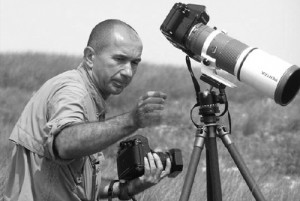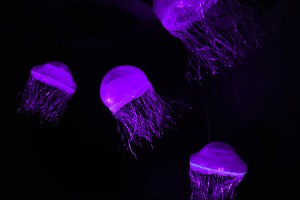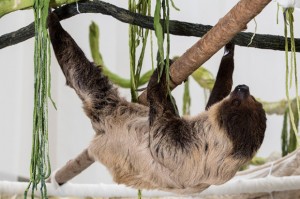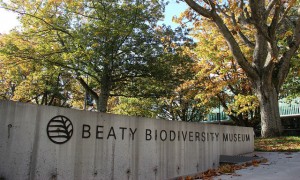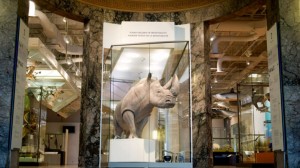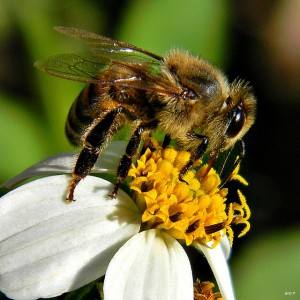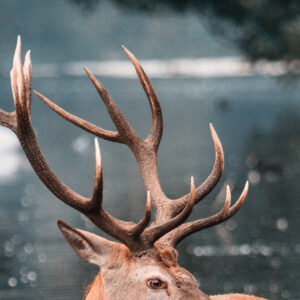Seven Nature Exhibits to see this Summer!
The lazy summer months are a great time to travel to your local museum of natural history. In fact, many of Canada’s museums have special programming going on right now!
We’ve assembled a list of seven of the coolest nature exhibits taking place at museums across Canada this season.
[separator headline=”h2″ title=”Exhibit: The Wild Horses of Sable Island”]Where is it?: The Nova Scotia Museum of Natural History, Halifax, Nova Scotia.
The once treacherous Sable Island, located off the coast of Nova Scotia, has been the site of over 475 shipwrecks since the early seventeenth century. Never settled by humans, today, the area hosts a population of around 300 feral horses who are the only terrestrial mammals living on the land.
Roberto Dutesco’s 20 years of photographs of the horses of Sable Island form the basis of this exhibit at Nova Scotia’s Museum of Natural History. The gallery hopes to shed light on the mysterious island and its beautiful equestrian inhabitants.
This exhibit runs from June 6 – October 13
[separator headline=”h2″ title=”Exhibit: Creatures of Light Nature’s Bioluminescence”] Where is it?: Canadian Museum of Nature, Ottawa, Ontario.
The Canadian Museum of Nature in Ottawa, Ontario is currently featuring its Creatures of Light exhibit focusing on organisms that glow through bioluminescent chemical processes. The exhibit features live flashlight fish, who emit light from pouches below their eyes, as well as constructed nature scenes such as: a night time meadow with fireflies; a woodland floor with glowing mushrooms; a cave system with glow worms; and a sparkling sea with microscopic plankton.
The exhibit promises to teach patrons how organisms use light to attract mates, lure prey and defend against predators as well as why and how scientists study bioluminescent creatures.
This exhibit runs from May 3 – November 9.
[separator headline=”h2″ title=”Exhibit: Nature’s Slowpokes”] Where is it?: Montreal Space for Life, Montreal, Quebec
If you’re looking to take it easy this summer, Montreal’s Space for Life is featuring a place to relax and learn about nature’s slower creatures. The museum’s Nature’s Slowpokes exhibit features sloths, tortoises, slugs and other slow moving creatures. You can even chill out in a specially designed space while nature interpreters tell you about the lifestyle of animals that live by the mantra: slow and steady wins the race.
This exhibit runs from June 7 – October 26
[separator headline=”h2″ title=”Exhibit: Backyard Biodiversity”] Where is it?: Beaty Biodiversity Museum, Vancouver, British Columbia
The Beaty Biodiversity Museum’s current theme of backyard biodiversity is designed to introduce visitors to the local plants and animals of British Columbia through interactive exhibits, scientific information and special programming which looks to both inform and stimulate the public.
The museum features many special events based on the local environment such as: backyard biodiversity tours, biodiversity trivia sessions, and naturalist 101 talks designed to teach the public about the natural history of the province and its diverse plant and animal populations.
[separator headline=”h2″ title=”Exhibit: Life in Crisis: The Schad Gallery of Biodiversity”] Where is it?: The Royal Ontario Museum, Toronto, Ontario
The Royal Ontario Museum’s Life in Crisis exhibition looks to impart three key messages on its visitors: life on earth is interconnected, it is diverse and it is currently at risk. The gallery emphasizes the impact humans are having on the environment by displaying the museum’s extensive natural history collection of thousands of organic specimens and through an assortment interactive multimedia exhibits and shows.
Visitors can look forward to seeing a living coral reef; “Bull” the southern white rhino; a live leafcutter ant colony and all manner of plant and animal species from around the world.
[separator headline=”h2″ title=”Exhibit: Canadian Wildlife Photography of the Year”] Where is it?: Canadian Museum of Nature, Ottawa, Ontario
The winners of the 2013 Canadian Geographic Wildlife Photography of the Year awards are on display at the Canadian Museum of Nature this summer. Museum patrons will see amazing, photographs of mammals, birds, insects and amphibians as well as pictures of Canada’s geological landscape and natural rock formations.
Some of the award winning shots include subjects of: a Rufous Hummingbird feeding on honeysuckle; a grizzly bear drinking mountain runoff water; a Great Owl hunting for voles; and a 70-meter-tall clay formation standing in a Saskatchewan valley.
This exhibit runs from May 16 – September 1
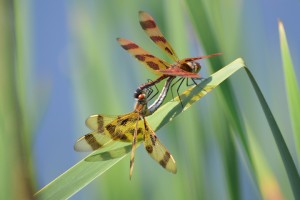
This photograph of two Halloween pennant dragonflies (Celithemis eponia) was the 2013 winner in the Junior Photographers category.
Kyle MacEachern
[separator headline=”h2″ title=”Exhibit: Prairie Pollination”] Where is it?: Online at www.prairiepollination.ca and developed by The Manitoba Museum, Winnipeg Manitoba
While simultaneously running displays and exhibits for visitors, staff at the Manitoba Museum have been working behind the scenes researching pollination in the Canadian prairies for the past 10 years. And while some of their work can be seen on location at the museum in Winnipeg, many of their specimens are too difficult to display to the general public. Because of this, the museum has created the online exhibition Prairie Pollination to showcase the pollinators that play such a vital part in the Canadian ecosystem.
Browsers of their exhibit can expect to see photographs of endangered and common prairie plants alongside their bird and insect pollinators. These are brought to life with watercolour paintings, videos and virtual tours that help provide depth and context to the specimens.
Thank you to our guest blogger Dylan Copland for this post. Dylan is a journalist and media specialist living in Ottawa, Ontario. He is currently volunteering with Nature Canada where he is writing about animals, nature and the people who love them. You can reach him at dmcopland@gmail.com and find his portfolio on the web at: dylancopland.wordpress.com.

